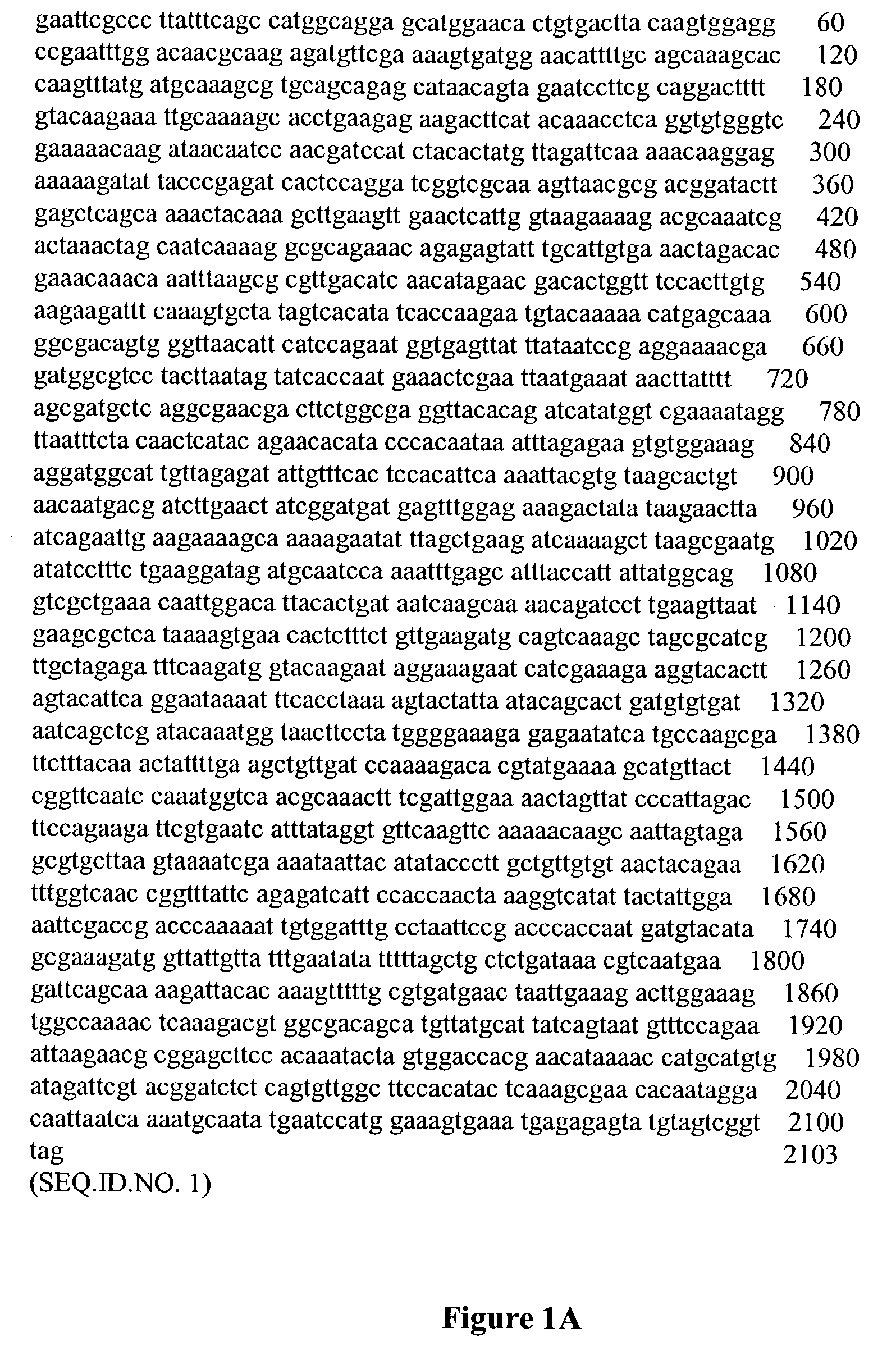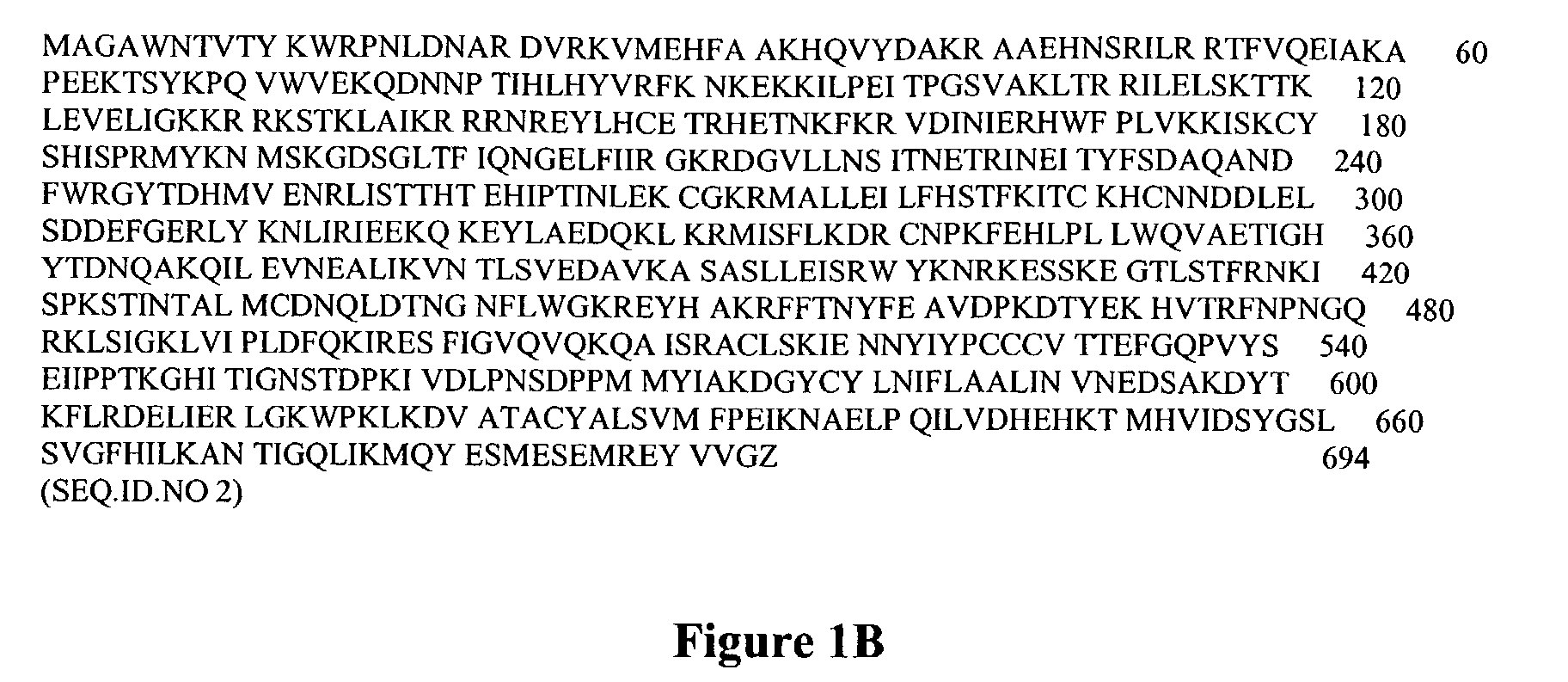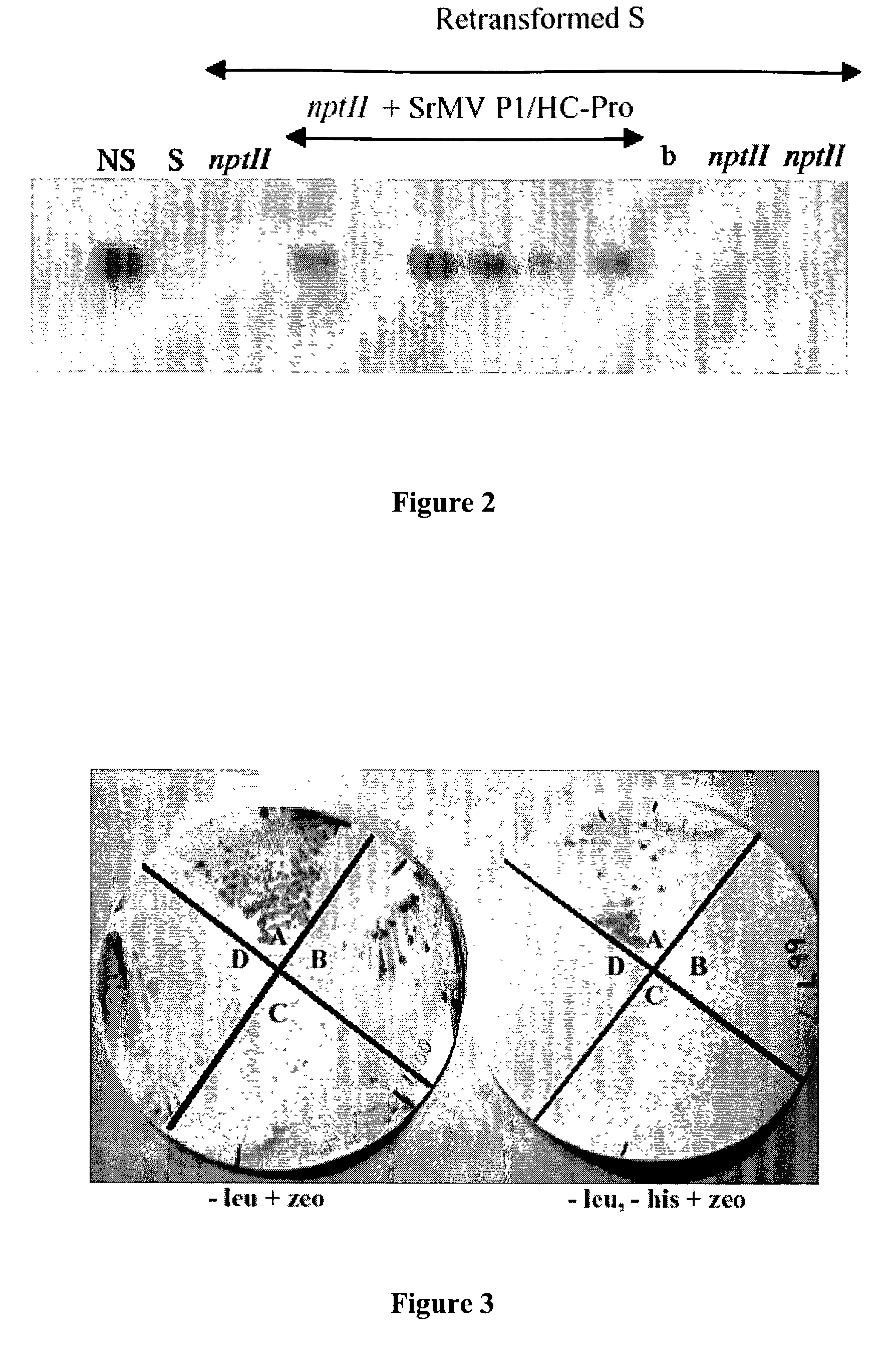Isolation of proteins involved in posttranscriptional gene silencing and methods of use
a posttranscriptional gene and protein technology, applied in the field of sugarcane protein isolation, can solve the problems of limiting this approach to model, all of the biochemical pathways of ptgs and the enzymes that are involved have not yet been elucidated, and the understanding of the biochemical pathways is difficult. to achieve the effect of increasing viral resistan
- Summary
- Abstract
- Description
- Claims
- Application Information
AI Technical Summary
Problems solved by technology
Method used
Image
Examples
example 1
Nucleotide Sequence of Sorghum Mosaic Virus
[0066]SrMV is a member of the genus Potyvirus and can cause mosaic disease and yield loss in poaceous plants such as sugarcane and sorghum (Shukla et al., 1994). A 2.0-kb region located at the 3′end of the SrMV strain H genomic RNA which encompasses the 3′untranslated region, the complete open reading frame for the coat protein and part of the NIb ORF has been previously sequenced(Yang and Mirkov, 1997). The remaining part of the SrMV genomic RNA has been sequenced in the present invention from overlapping RT-PCR products. From the combined sequences, a 9,581 bp consensus was derived that contains a continuous ORF encoding a 3079 amino acid putative polyprotein with ten gene products typical for members of the genus Potyvirus (Ingelbrecht et al., in preparation). The SrMV polyprotein consensus sequence was compared to that of Tobacco etch virus (TEV-HAT), Maize dwarf mosaic virus (MDMV-Bu), Plum pox virus (PPV-D) and Pea seedborne mosaic vi...
example 2
SrMV P1 / HC-Pro Reverses PTGS
[0067]The potyviral HC-Pro is a multifunctional protein and harbors at least 3 functional domains. The N-terminal part contains a highly conserved KITC motif and is involved in aphid transmission (Thornbury et al., 1985; Atreya and Pirone, 1991). The central part is required for long distance movement and virus amplification (Cronin et al., 1995; Kasschau et al., 1997) while the C-terminal part represents a papain-like proteinase involved in polyprotein processing (Carrington et al., 1990). In addition, potyviral HC-Pro is the determinant of potyviral synergistic interactions with other viruses (Pruss et al., 1997).
[0068]Potyviral HC-Pro can reverse the effects of PTGS in tissues that were previously silenced. This suppression phenotype has been observed for the potyviral HC-Pro protein of three different potyviruses, TEV, PVY and PSbMV, suggesting that this particular function of potyviral HC-Pro may be conserved among different potyviruses (Voinnet et a...
example 3
[0070]The yeast two-hybrid system has become a powerful tool for the study of protein-protein interactions in vivo. It can also be used to search an expression library for proteins that interact with a target protein. This latter application is being increasingly used with success in both animal (Kleiman and Manley, 1999) and plant systems (Kohalmi et al., 1998; Gindullis et al., 1999). Currently, high throughput two-hybrid procedures are being developed to catalogue protein-protein interactions on a genome-wide scale (Walhout et al., 2000).
[0071]Before embarking on a screen, it is useful to study the behavior of the target protein, termed bait, in the yeast cells. For example, one should demonstrate that the bait protein by itself does not activate transcription of the marker genes that are used in the selection and screening procedures. False positives can still be encountered following this precaution, but the great majority of these can be eliminated i...
PUM
| Property | Measurement | Unit |
|---|---|---|
| ionic strength | aaaaa | aaaaa |
| ionic strength | aaaaa | aaaaa |
| pH | aaaaa | aaaaa |
Abstract
Description
Claims
Application Information
 Login to View More
Login to View More - R&D
- Intellectual Property
- Life Sciences
- Materials
- Tech Scout
- Unparalleled Data Quality
- Higher Quality Content
- 60% Fewer Hallucinations
Browse by: Latest US Patents, China's latest patents, Technical Efficacy Thesaurus, Application Domain, Technology Topic, Popular Technical Reports.
© 2025 PatSnap. All rights reserved.Legal|Privacy policy|Modern Slavery Act Transparency Statement|Sitemap|About US| Contact US: help@patsnap.com



